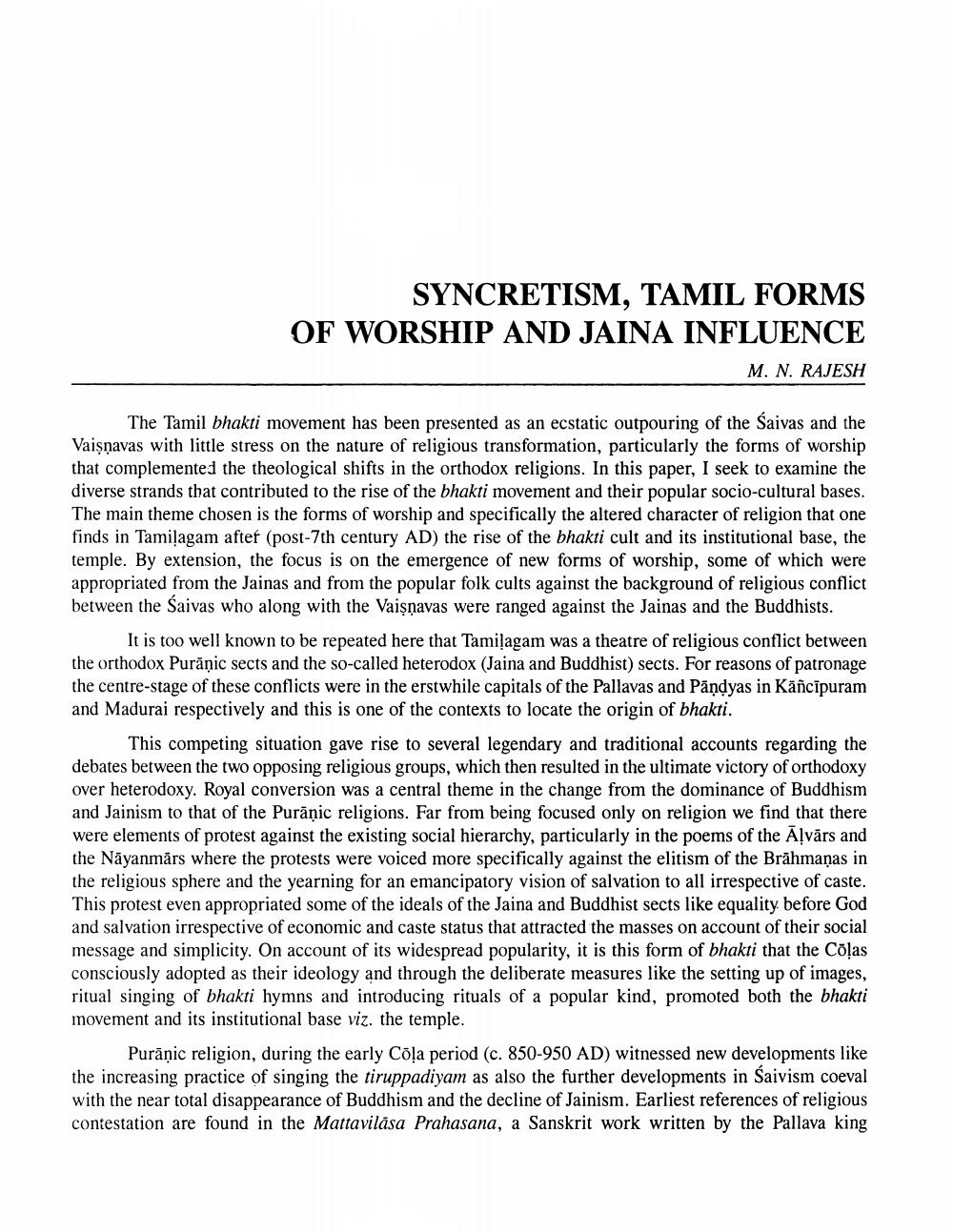________________
SYNCRETISM, TAMIL FORMS OF WORSHIP AND JAINA INFLUENCE
M. N. RAJESH
The Tamil bhakti movement has been presented as an ecstatic outpouring of the Saivas and the Vaişnavas with little stress on the nature of religious transformation, particularly the forms of worship that complemented the theological shifts in the orthodox religions. In this paper, I seek to examine the diverse strands that contributed to the rise of the bhakti movement and their popular socio-cultural bases. The main theme chosen is the forms of worship and specifically the altered character of religion that one finds in Tamilagam after (post-7th century AD) the rise of the bhakti cult and its institutional base, the temple. By extension, the focus is on the emergence of new forms of worship, some of which were appropriated from the Jainas and from the popular folk cults against the background of religious conflict between the Saivas who along with the Vaisnavas were ranged against the Jainas and the Buddhists.
It is too well known to be repeated here that Tamilagam was a theatre of religious conflict between the orthodox Purāņic sects and the so-called heterodox (Jaina and Buddhist) sects. For reasons of patronage the centre-stage of these conflicts were in the erstwhile capitals of the Pallavas and Pandyas in Kancīpuram and Madurai respectively and this is one of the contexts to locate the origin of bhakti.
This competing situation gave rise to several legendary and traditional accounts regarding the debates between the two opposing religious groups, which then resulted in the ultimate victory of orthodoxy over heterodoxy. Royal conversion was a central theme in the change from the dominance of Buddhism and Jainism to that of the Purāņic religions. Far from being focused only on religion we find that there were elements of protest against the existing social hierarchy, particularly in the poems of the Aļvārs and the Nāyanmārs where the protests were voiced more specifically against the elitism of the Brāhmaṇas in the religious sphere and the yearning for an emancipatory vision of salvation to all irrespective of caste. This protest even appropriated some of the ideals of the Jaina and Buddhist sects like equality before God and salvation irrespective of economic and caste status that attracted the masses on account of their social message and simplicity. On account of its widespread popularity, it is this form of bhakti that the Coļas consciously adopted as their ideology and through the deliberate measures like the setting up of images, ritual singing of bhakti hymns and introducing rituals of a popular kind, promoted both the bhakti movement and its institutional base viz. the temple.
Purāņic religion, during the early Cola period (c. 850-950 AD) witnessed new developments like the increasing practice of singing the tiruppadiyam as also the further developments in Saivism coeval with the near total disappearance of Buddhism and the decline of Jainism. Earliest references of religious contestation are found in the Mattavilāsa Prahasana, a Sanskrit work written by the Pallava king




